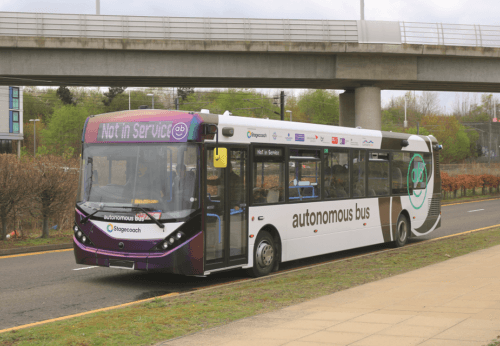The Government has set out changes to the Highway Code to ensure the first self-driving vehicles are introduced safely on UK roads. The changes clarify drivers’ responsibilities in self-driving vehicles, including when a driver must be ready to take back control.
Responding to a public consultation, the changes pave the way to ensuring the first wave of technology will be used safely, explaining clearly that while travelling in self-driving mode, motorists must be ready to resume control in a timely way if they are prompted to – such as when they approach motorway exits.
The plans also include a change to current regulation, allowing drivers to view content that is not related to driving on built-in display screens, while the self-driving vehicle is in control. It will, however, still be illegal to use mobile phones in self-driving mode, given the greater risk they pose in distracting drivers as shown in research.
Vehicles will have to undergo rigorous testing and only be approved as self-driving when they have met stringent standards. The Department for Transport (DfT) says it will also work with industry, regulators and safety organisations to ensure drivers can access information, including online, to help them use the vehicles safely.
Transport Minister Trudy Harrison said: “This is a major milestone in our safe introduction of self-driving vehicles, which will revolutionise the way we travel, making our future journeys greener, safer and more reliable. This exciting technology is developing at pace right here in Great Britain and we’re ensuring we have strong foundations in place for drivers when it takes to our roads. In doing so, we can help improve travel for all while boosting economic growth across the nation and securing Britain’s place as a global science superpower.”
The introduction of the technology is likely to begin with vehicles travelling at slow speeds on motorways, such as in congested traffic.
The Government believes that the development of self-driving vehicles could create around 38,000 new, high-skilled jobs within Britain’s industry that would be worth £41.7 billion by 2035.
Following a call for evidence, the Government announced in April last year that vehicles fitted with automated lane keeping system (ALKS) technology could be the first example of self-driving technology.
Steve Gooding, Director of the RAC Foundation, said: “The Highway Code has been updated a number of times in recent years to reflect the rapidly changing transport world we live in and these latest additions will help us all understand what we must and must not do as we move forward to an environment where cars drive themselves.
“The final part of the jigsaw is to ensure these amendments are widely communicated to, and understood by, vehicle owners. Vehicle manufacturers and sellers will have a vital role to play in ensuring their customers fully appreciate the capabilities of the cars they buy and the rules that govern them.”
SMMT Chief Executive Mike Hawes added: “Amending the Highway Code to reflect the pace of technological change will help clarify what motorists can and can’t do when a self-driving feature is engaged, so promoting its safe use.”


